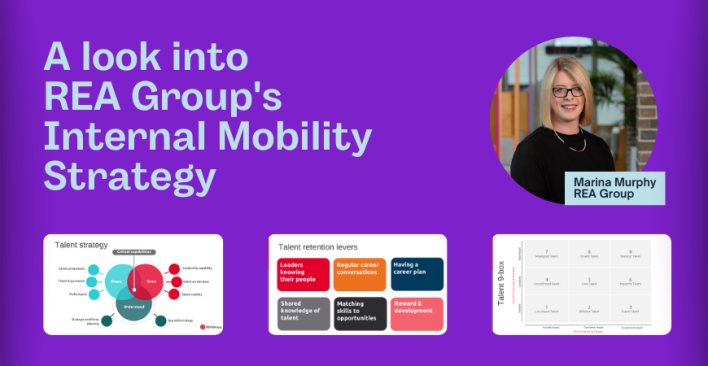Delighting candidates won’t work, help them make the right decisions instead

Hands up if you’re a fan of TV streaming services? Safe to say we all are, and yet while I know I am just one in a sea of millions (Netflix has 130 million individual subscribers worldwide), I’ve never felt like just another user.
The experience, from day one, has been very personal and intuitive; effortlessly delivering exactly what I want, blocking out everything I don’t and guiding me towards options that I hadn’t even thought of. This personalised experience is what individuals have also come to expect from the organisations they engage with; from products and services to employment and culture.
Today’s digitally savvy candidates expect recruitment processes to reflect the personalisation, effortlessness and intuitiveness they experience outside of work. They don’t want to jump through unnecessary hoops or be treated like a Talent ‘segment’ that ignores their unique capabilities and preferences.
Recruiters are under enormous pressure to do more with less while they manage historically high requisition loads, increasingly complex and competitive Talent markets and highly informed candidates with growing access to more information about prospective employers. Recruiting functions are responding to these pressures by rushing through investments in technology with the goal to automate routine recruiting tasks and capture the attention of flighty candidates. However, without corresponding changes in underlying processes and practices, technology investments won’t improve the recruiting performance or the candidate experience.
Rather than just prioritising solutions that improve efficiency and support candidate needs, recruiters must empathise with what candidates really value in the recruiting experience and deploy effortless technology solutions that guide decision making through constrained choice and nudging.
Recruiting in a digital candidate era
The growing number of candidate-focused platforms and information sites makes the labour market increasingly transparent for candidates and a tightening labour supply has increased the importance of digital and social media sites where candidates can more carefully evaluate their opportunities.
With this in mind, it’s not surprising that Talent Acquisition functions are understandably concerned about negative recruiting experiences derailing their brand. After all, regardless of the type of experience a candidate has with an organisation there’s a chance it could become public information.
The industry’s growing obsession with delivering a high-quality candidate experience to mitigate poor feedback or prompt positive word of mouth often leads to trying to ‘wow’ candidates. However, unlike customer service functions, recruiters haven’t yet grasped that delighting candidates is not the answer. Rigorous quantitative analysis by Gartner found that exceeding customer expectations does not lead to measurable loyalty gains.
Customers don’t want companies to go above and beyond; they just want fast answers to their questions, with as little effort on their part as possible. Recruiters should put a halt on their efforts to delight candidates with novel experiences or flashy interfaces and instead should focus on reducing perceived effort to ensure candidates are engaged and equipped to decide who they want to work for.
Meeting expectations
The current candidate experience isn’t working; over 60 per cent of candidates find current applications to be time consuming and stressful and high effort will see 30 per cent less candidates move to the interview stage.
Organisations must ensure candidates’ application and assessment experience meets the minimum of:
- Clearly stating what will be asked of them and why, how much time they should budget, and what they will get out of it;
- Helping candidates make informed decisions about the level of effort they should commit and their fit for the job and organisation;
- Understanding the stages in candidates’ journeys and keeping candidates up to date on their progress and next steps.
Progressive organisations have applied these principles and made three shifts that raise application completion rates and candidate quality without requiring high levels of investment or sacrificing speed:
- Think holistically about your recruitment process: rather than relying on expensive technical solutions alone, actively build management of candidate commitment into recruiting processes;
- Personalise the candidate experience to key Talent: prioritise more targeted engagement of key Talent to address the emotional drivers and barriers of the recruiting process;
- Drive candidate decision making: rather than sharing an unrealistic vision of the organisation, tailor the recruiting process to support candidates in making the right decision for themselves and the business.
There are many unnecessary hurdles in the recruiting process that can be removed independently of system configurations. By actively managing candidates’ engagement throughout the recruiting experience, organisations can see sizable upticks in the number of completed applications.
AT&T hires over 7,000 retail and installation roles annually and recognises the need to ensure candidates are engaged throughout the application process. They inform applicants of the level of effort they need to put in and the support AT&T will provide. In the job description, AT&T included a simple visual of the skills and competencies required by the role. AT&T has seen application completion rise by 15 percent.
Driving candidate decision making
The aim of any candidate experience initiative in the long term is to improve the quality of Talent deciding to join – and stay in – the organisation. For this improvement to happen, candidates must clearly understand the company and role as well as how they will fit in this position and their longer-term career potential in the company.
Recruiting functions are often tempted to create a standard set of guidelines focused on sharing the most positive image of the organisation. However, if the optimistic impression is not supported by the reality of the role when a candidate joins the organisation, new hires’ commitment can decrease 25 percent over their first year, fueling new hire turnover and the risk of negative social media feedback.
Organisations should provide flexible guidance to recruiters and candidates’, so they can match candidate needs to the organisation’s ability to provide compelling career opportunities and to realistically assess their potential fit. Currently only 36 percent of candidates agree the information they found during the recruiting process helped them decide whether they would succeed at the organisation.
Ultimately, sharing a selection of real scenarios with candidates empowers them to understand the values and operating environment they would be working in.
Personalising for key Talent needs
As organisations work to improve the candidate experience, they often lose sight of two important factors:
- The candidate journey is starting earlier, even before an application takes place
- The level of customisation should be rigorously prioritised according to business needs
This means companies must understand and take into account all the decisions candidates make before they apply. To do this, organisations must place their bets against the most important and difficult-to-source Talent segments to build detailed journey maps without stretching recruiting resources too thin.
By targeting the most important Talent segments with deeper levels of personalisation, organisations can design an experience that engages the emotional drivers behind candidate behaviours and decision making. Quality candidates increasingly expect the same digital experience they get as consumers. They have more choice than ever in where to apply, and they come armed with information that will inform their decision.
Designing processes that use technology to evolve as a candidates’ needs do is where the real value lies. Recruiting functions need to empathise with what candidates’ value in their experiences and digitalisation efforts need to streamline the recruiting process whilst simultaneously personalising the candidate journey.
By designing the process to increase candidates’ commitment, inform their choices, and tailor to their needs, organisations will be equipped to differentiate themselves in increasingly demanding labour markets.
Cover image: Shutterstock
This article first appeared in The Global Recruiter ANZ issue 19.
Aaron will be sharing more about how we can redesign our hiring process to guide the right candidate action at the ATC2019. Find out more here.
Related articles
2 Responses to “Delighting candidates won’t work, help them make the right decisions instead”
Leave a Reply
Sign up to our newsletter
Get a weekly digest on the latest in Talent Acquisition.
Deliver this goodness to my inbox!




I enjoyed your thoughts, especially around the candidate journey. To me, there are two aspects of the journey; the pre-apply journey which I think of as a “prospect journey” and the candidate journey through the application and interview process. I appreciate the work of Gartner CEB in terms of setting up the 4 stages of a prospect’s journey and identifying some of the key elements that a prospect is seeking at each stage. Great work. Have any of your client’s implemented a process that incorporates those four stages into a prospect journey map? If so, has it been published? Thanks in advance for your reply.
Hi Marvin. Yes, we did profile a case from Charles Scwab that includes their candidate journey map. If you are a Gartner for HR Leaders or Gartner Recruiting Leadership Council client, you can access that case study on the relevant portal. If not, here’s an article that looks at Charles Schwab’s broader customer journey mapping approach. This was heavily influential for the Recruiting team’s approach to candidate journey mapping: https://www.invisionapp.com/inside-design/charles-schwab-design/